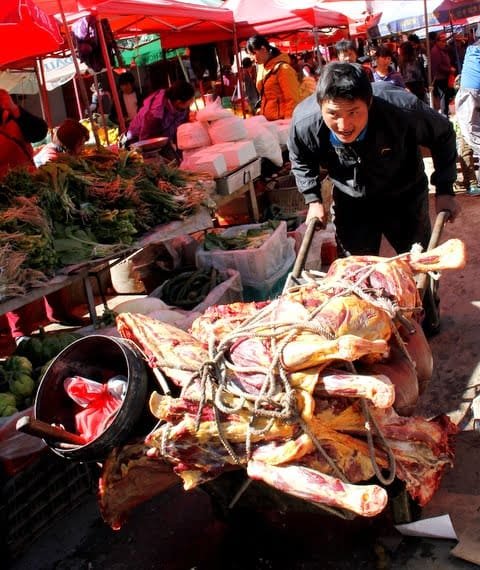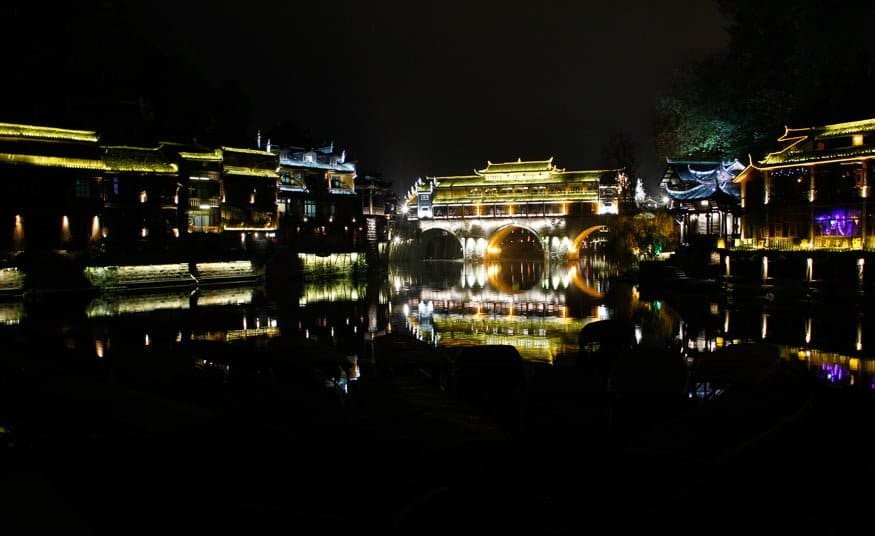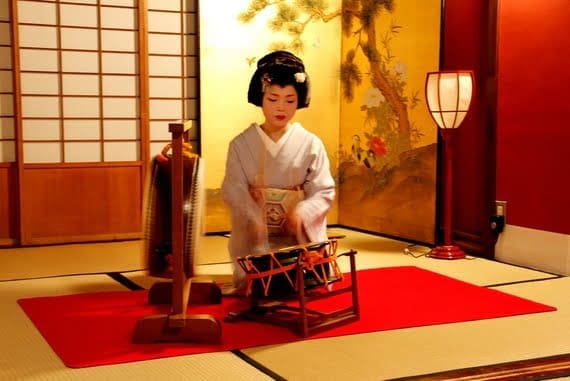
How to tie a kimono, arrange an ikebana flower arrangement, write kangi calligraphy…these are skills we never dreamt we’d learn, but with three days in the historic city of Kanazawa and the help of The Art of Travel, we took the ultimate crash course in Japanese culture. More an art insider than a tour operator, The Art of Travel opened their black book to the city’s top craftsman, entertainers, chefs, and historians to give us an experience a gaijin will never forget.
As the home base for our Kanazawa immersion, Art of Travel set us up in a former 19th-century geisha teahouse turned traditional machiya home. With rice paper walls, tatami-mat floors, fluffy futons, and a zen courtyard, this place seemed out of a Japanese storybook.
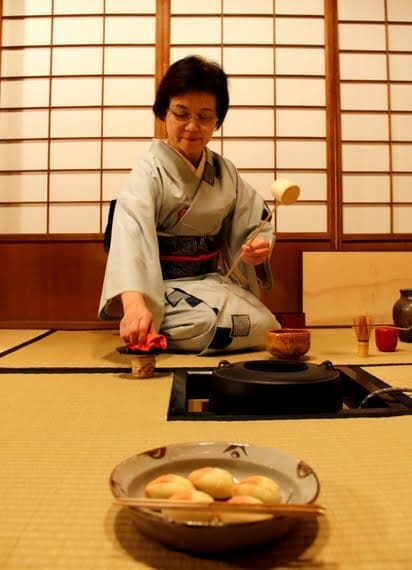
We dropped our bags and were whisked into our machiya’s tea ceremony room. Tea ceremony is performed as a way to welcome guests and to reconnect family and friends. It goes back to Zen Buddhism and is about appreciating the moment —the taste of the bitter green tea, the beauty of the pottery, and the connection between close company. Our ceremony was led and taught by sensei Haruko Yoshida, a woman who literally went to school to master this complex process. In tea ceremony, there is a specific way to do everything—how to sit, hold the cup, take a sip, and bow…with about 20 steps in between. It was a fascinating experience that will forever change the way we look at a cup of tea.
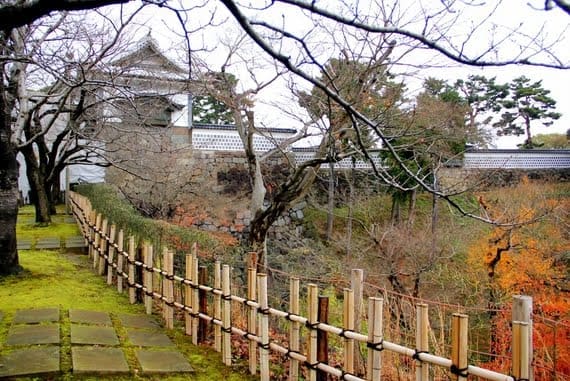
To learn more about Kanazawa, we didn’t just get any ole tour guide, we got a PhD historian. During our exceptionally informative walk through town, we learned that Kanazawa was an independent state until the Maeda clan was sent in to unify them with Edo culture and the rest of Japan. The Maedas’ arrival sparked a renaissance of sorts with samurai mansions, geisha teahouses, and artist guilds popping up—all which can still be seen around town, if you know the right alleys to turn down.
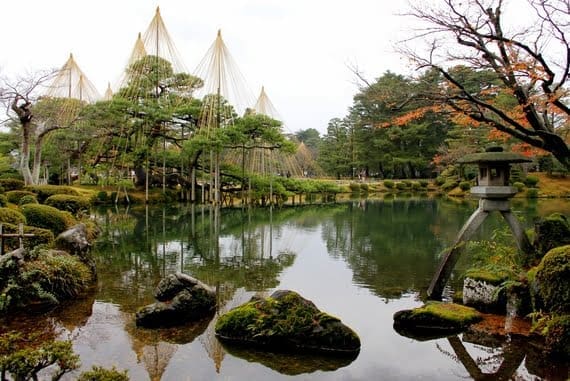
The Kanazawa Castle garden, Kenrokuen, is said to be one of the finest gardens in all of Japan, having all the aspects of the ideal Japanese garden–spaciousness, seclusion, artifice, antiquity, watercourses, and panoramas. We caught the garden on the cusp of winter, which would sound like an inopportune time, but this is when these amazing snow rope installations go up on the Karakinomatsu Pines. Each branch is meticulously tied making an artful frame around the tree.
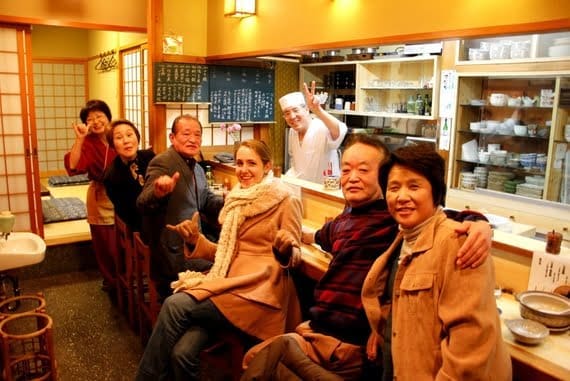
That night we explored our neighborhood and found this fun local restaurant. The bar full of Kanazawans asked us where we were from and when we said New York, they all started cheering. Apparently, the Yankees outfielder Matsui is from this area and a local hero in both NYC and Kanazawa.
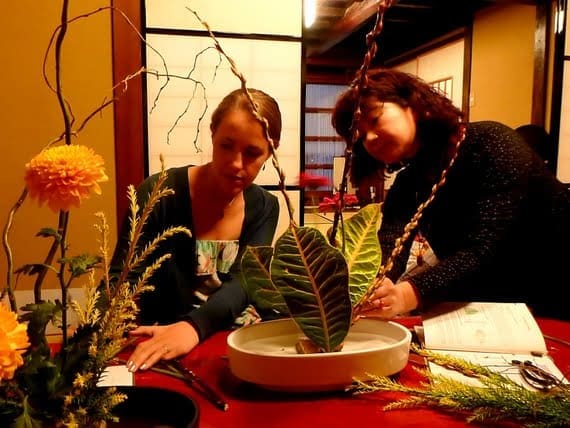
The next morning as we were finishing breakfast, a delivery of persimmon branches and bundles of flowers and leaves came to our door. They were brought in for our next Art of Travel course: Ikebana flower arranging. My mother had a flower business so I thought I had this one in the bag, but the minimalism of the 600-year old craft is a whole new way of thinking. Three main elements are all you need: one lead flower, two complementary leaves, and plenty of negative space. Arrangements are typically made to fill the large tokonoma alcoves in homes, so even though they can seem spartan up close, the grand scale and varied dimension grabs you when you walk in the door. With a few reworks, we were quite proud of our arrangements (see the slideshow).
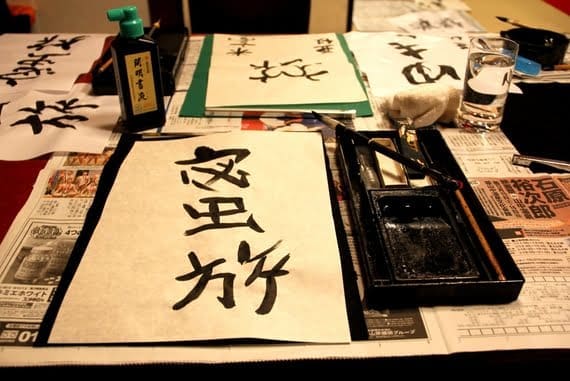
Next up in style school: Calligraphy class. Our sensei Kiho Kida laid out her horse-hair paintbrushes, black ink block, water well and rice paper on the table and we got to it. Japanese is one of the most cryptic languages with three alphabets and thousands of characters but in thick brushstrokes, one word can become art. We learned a few basics like how to hold the brush, how much ink and pressure to apply, and how not to make a mess of it all. For those who aren’t fluent in Japanese, this work above says “HoneyTrek.”
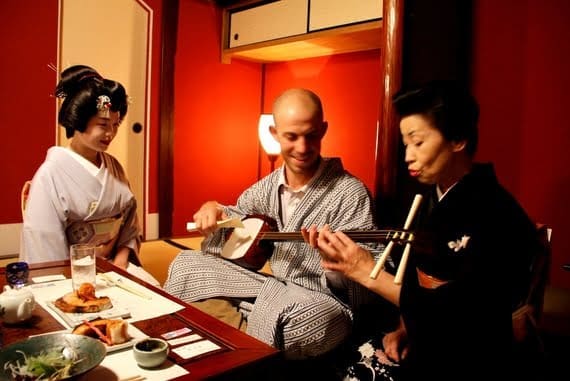
There are only a few cities left in Japan with geishas practicing the 8th-century art of entertaining with dance, music, and conversation and Kanazawa is one of them. However, to witness a performance, you can’t just anyone can roll into a teahouse and you definitely can’t call one up for a house call…but The Art of Travel can. The AOT set up a private dinner where two geisha performed for us in our living room. The night was off-the-charts amazing with breathtaking song, dance, costumes, and cuisine, but the coolest part was just hanging out with these near-mythical geishas. We did shots of sake, strummed the shamisen, played kimono dress up, and giggled about it all. For a glimpse at the performance, watch this video.
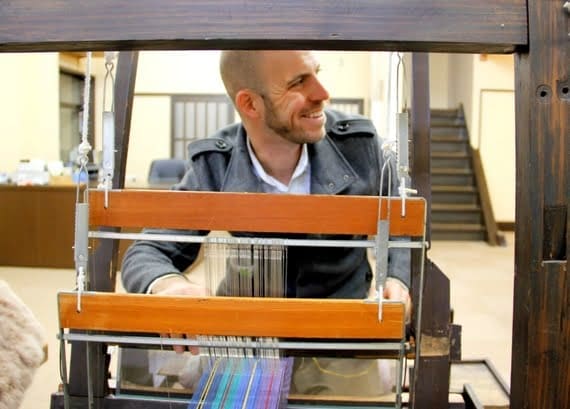
It’s not often you can say, “A geisha gave me a hangover,” but even with such an unparalleled excuse, we didn’t want to miss the next day’s cultural events. We carried on and into countryside of Kanazawa to the Ushekubi silk workshop. The 100-year old brand specializes in the silk from twin cocoons. What was once tossed out as defects, they honed to make a new kind of beautifully rough-hewn silk. We watched the ladies unravel the silk filaments in boiling water and spin them into thread (it takes 120 filaments make one strand), then dye and weave it into fabric. Mike tried his hand at the loom and he was a natural!
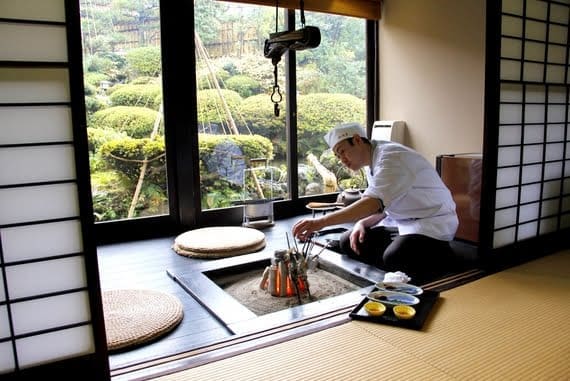
For lunch we were surprised with a stop at Wataya Ryoken, home to one of the most highly acclaimed restaurants in Japan! They specialize in Kaga cuisine, a regional country-style with river fish, mountain vegetables, and delicacies we’d never dreamt of. After numerous courses, presented in exquisite fashion, out came a chef with a pair of live fish. He prepared stacks of coals over ash in a Irori-style pit and roasted it to perfection. This still remains one of our most incredible meals of the HoneyTrek.
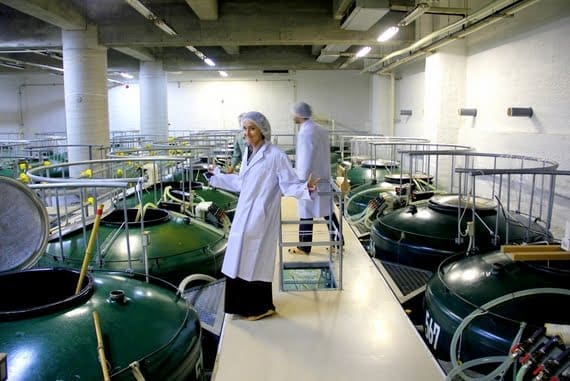
As a toast to the tour, our final stop was to the Nakemura sake distillery. Kitted out in lab coats, hair nets, and slippers, we got a tour by one of the head rice-wine makers. He took us to see the magical koji (germinated rice), massive steamed rice cookers, and fermentation tanks. And like all good distillery tours, it ended in a delicious tasting. Sake Shopping Tip: On the bottle, look for the percentage that the rice is polished. Polished rice is sweeter and unpolished is stronger.
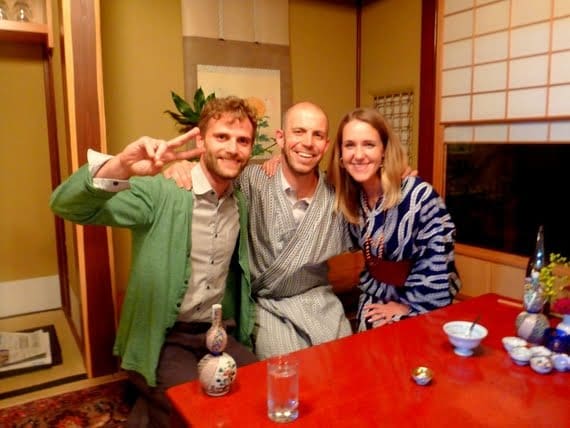
We’ve never been a big fan of organized tours but The Art of Travel was like nothing we’ve ever experienced. They are true curators and conduits to a cultural experience that would be inaccessible to the average visitors. We learned more about Nihon culture in these three days than our whole month in the country! When you visit Japan, you simply have to spend a few days with The Art of Travel, it will make your trip…we know it made ours.
TIP: For a trip with this many moving parts and with such a significant price tag, we’d highly recommend getting travel insurance.

